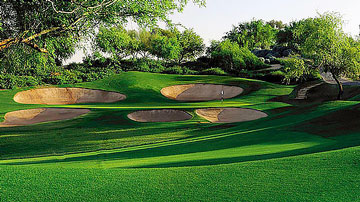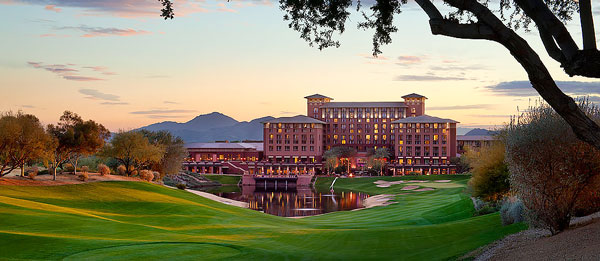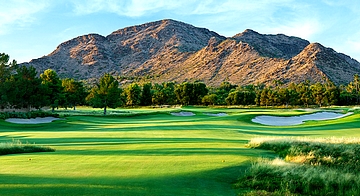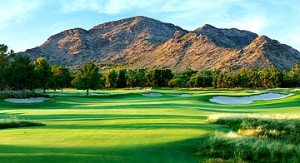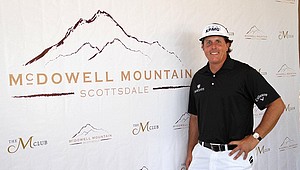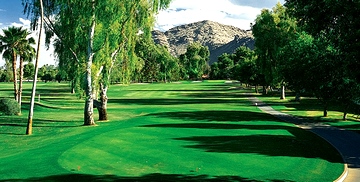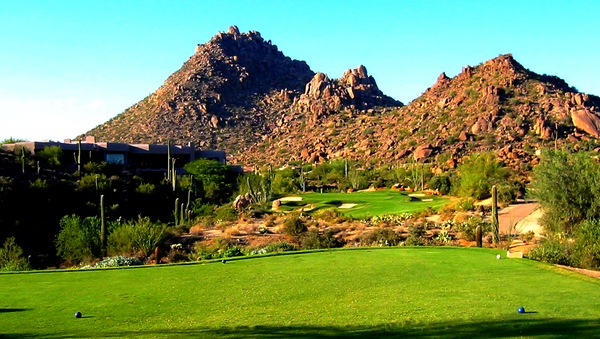Kierland Golf Club – Arizona Golf Course Reviews
Picture your foursome decked out in colorful tartan garb, complete with kilts and sporrans, playing golf and sipping on Johnnie Walker Blue premium scotch with a bagpiper serenading you behind the picturesque, water-guarded 18th green. It might feel like you’re back in the highlands, but in fact you are in the Scottsdale resort corridor at Kierland Golf Club, which offers a “Scottish Golf Experience” complete with all the trimmings.
Yes, they have a kilt that will fit you, but you’ll need to bring your own Gaelic accent. Along with some memorable golf holes, this complex at Westin Kierland Resort and Spa has been as innovative as any in Arizona in providing players an enjoyable day of golf.
 Kierland forged the path to Scottsdale golf “your way” by offering you a choice of three distinct modes of transportation if you don’t plan to loop it on foot: air-conditioned golf carts, Segways, and most recently, bicycles with integral golf bags.
Kierland forged the path to Scottsdale golf “your way” by offering you a choice of three distinct modes of transportation if you don’t plan to loop it on foot: air-conditioned golf carts, Segways, and most recently, bicycles with integral golf bags.
Wait, there’s more: giant cooling fans and misting systems on its covered driving range to beat the summer heat, expert golf instruction from Mike and Sandy LaBauve, FORE-MAX golf nutrition and fitness programs, golf spa massages, and to top it all off, a bagpiper playing at sundown to mark the end of a glorious day of golf.
Kierland Golf Club offers rota-combinations over three nine-hole courses, named Acacia, Ironwood and Mesquite after the trees that are prominent on the property.
Notice that none are named Cactus. Those prickly natives aren’t featured here, which some golfers consider a welcome respite from the rugged desert-target layouts scattered throughout Scottsdale.
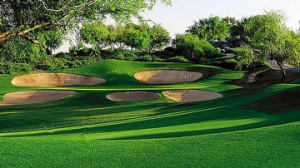 This is a more traditional golf experience and a key component of the lush, upscale Kierland Commons Community vibe. Designed by Scott Miller, formerly the right-hand design man for Jack Nicklaus Designs, the 27-hole golf complex opened in 1996, almost four years before the neighborhood took shape and the Westin Kierland Resort & Spa hotel was erected.
This is a more traditional golf experience and a key component of the lush, upscale Kierland Commons Community vibe. Designed by Scott Miller, formerly the right-hand design man for Jack Nicklaus Designs, the 27-hole golf complex opened in 1996, almost four years before the neighborhood took shape and the Westin Kierland Resort & Spa hotel was erected.
Miller artfully employed “core golf” design techniques to wrap the golf course into the resort community and did so in a way that insulates players from the hub-bub of activity in this north Scottsdale locale.
The three 9-hole layouts are played in any 18-hole combination and no matter which tracks you play, you’ll feel ensconsed in a parkland setting and enjoy sweeping vistas of Camelback Mountain, Mummy Mountain, Piestewa Peak, the McDowell Mountain range.
But don’t get too enamored with the view because plenty of challenges lie directly underfoot with lakes, dry washes and 300 bunkers scattered about, on the way to elevated greens that are well protected. Each course has four sets of tees and each combination plays at about 7,000 yards from the back tees and 5,000 yards from the front.
Acacia is generally regarded as the flagship nine as it finishes at the foot of the hotel, although Ironwood also has its avid local fan base with a solid, demanding layout. Mesquite was the first to unfold and represents straightforward golf until you reach the finishing hole, which is apropos for Kierland because Miller saved his best for last at the ninth hole on each layout.
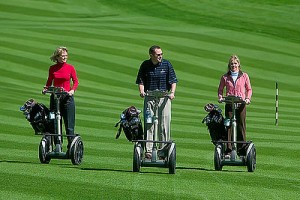 On Mesquite, that means a 427-yard downhill par-4 with an approach shot over a small lake to a green fronted by a menagerie of six bunkers.
On Mesquite, that means a 427-yard downhill par-4 with an approach shot over a small lake to a green fronted by a menagerie of six bunkers.
The finish on Ironwood is a 495-yard downhill par-5 with water extending the full length along the right side of the fairway, and two bunkers in the primary landing area. That water hazard guards the right side of the green as well and two large bunkers guard the left, creating a risk-reward scenario.
Acacia has several memorable holes, including the best par 3s at this complex, but again the ninth is the highlight of the round. This par-5, at 531 yards, features an 80-foot drop from the tee with water protecting the left side of the fairway and a series of 10 bunkers threaten from about 200 yards in. The three hole finishing stretch on Acacia, which also includes a heavily-bunkered 374-yard par-4 and a downhill, 219-yard par-3, is one of the more memorable finishes in Scottsdale.
The “AZGA Local Hang” for Kierland is easy. After the round, the clubhouse and the hotel offer plenty of places to relax, refresh and libate – you can’t go wrong with any venue you choose. If you feel the need to wander off, take time to visit Kierland Commons, on foot, directly east of the hotel.
With its trendy restaurants, shops, boutiques, centerpiece fountain and brick streets, you’ll find it to be reminiscent of a downtown village square, amped up to today’s volume.
But before you go, do yourself a favor and turn in the kilt.
Read our player’s review of every golf course in Arizona, click Arizona Golf Course Reviews. It’s just one part of “All Things Arizona Golf” offered at the Arizona Golf Authority.
